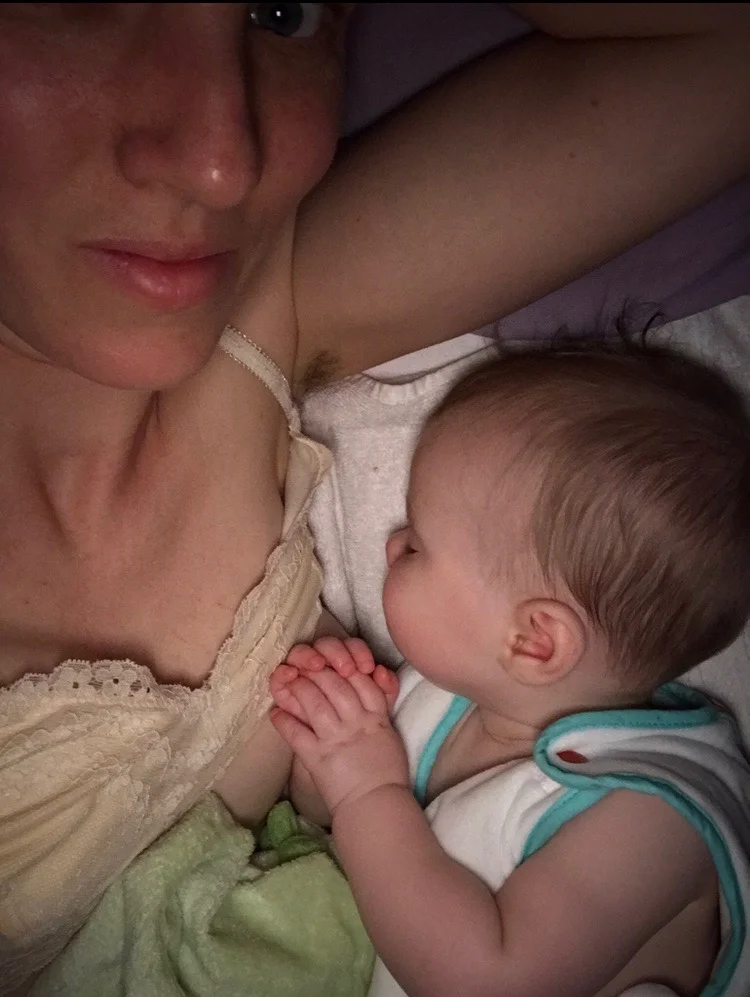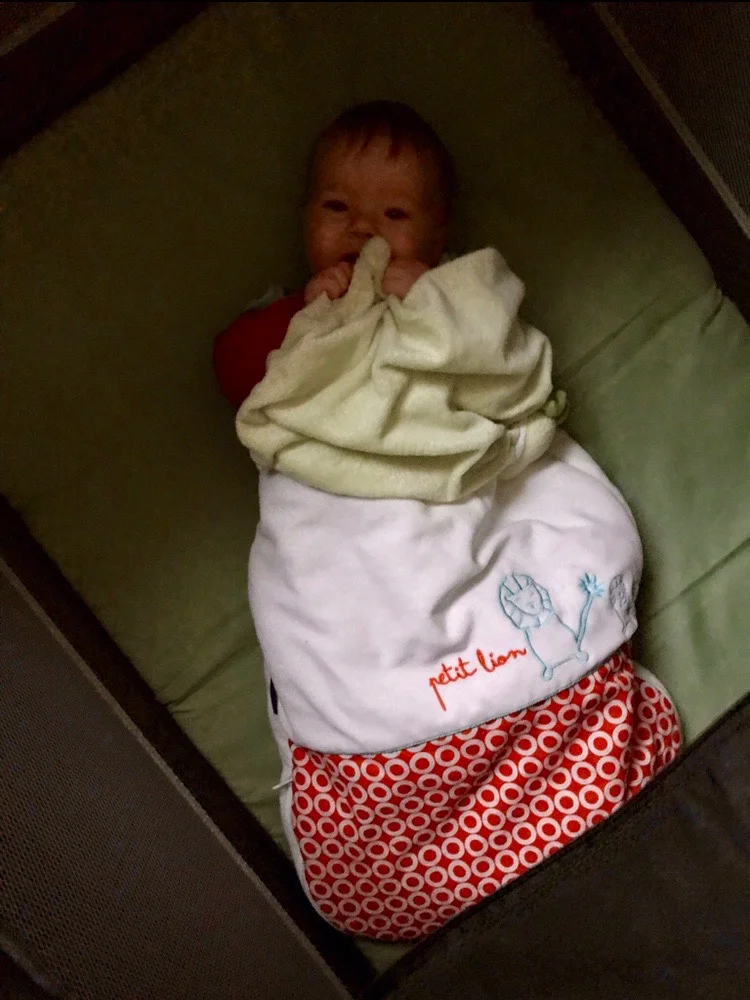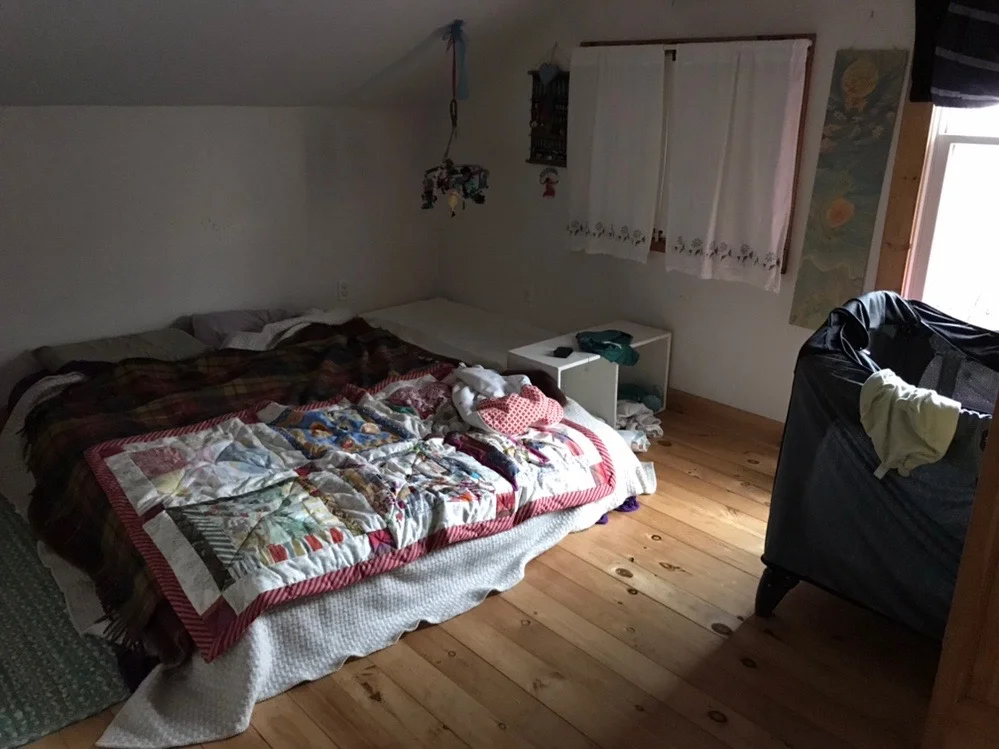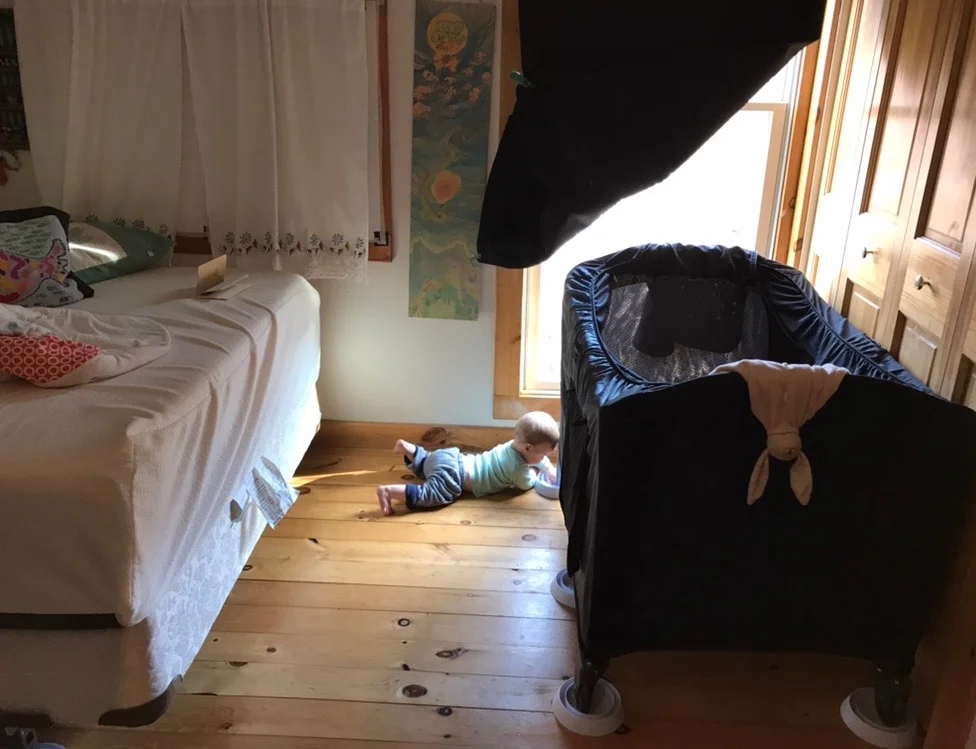As I covered in my previous post on sleep, our path to sleep training was filled with interesting discoveries, sweet co-sleeping moments and increasingly a feeling absolute exhaustion. I chose to wait until my baby was 5.5 months old before beginning my chosen sleep training method. At last the time for sleep training was nigh and my husband and I were as prepared as we could be. We made sure to cover the basic checklist first:
-Baby is well, everyone in the house is feeling healthy
-No upcoming doctor appointments of shots scheduled for the next 2 weeks
-No travel or major events for the next 2 weeks (I was nervous about this one because we had Christmas coming up but luckily it was exactly 2 weeks away! I just hoped we could get a good start before the traveling and madness of the holidays began!)
-The baby’s bedroom or sleeping space is comfortable and familiar and fulfills all the criteria for healthy sleep: Dark/Quiet/Well ventilated/Safe etc,
When we started here’s what our sleeping scenario looked like: We all 3 slept in the same room. Hazel Slept on her own mattress beside our mattress on the floor but she spent a lot of the night on my part of our mattress nursing and sleeping pressed up against me. Nursing to sleep was our primary soothing method, I used breastfeeding to put her to sleep at the beginning of the night and again each time she woke during the night. This had worked very well for the first 4.5 months but then it started to become less enjoyable for me as she became more alert and active. Each rustle of the sheet as her father rolled over, each movement as I shifted my shoulders or stretched out my legs or tried to scratch and itch…every motion had the potential to wake her. It was becoming more and more uncomfortable sleeping constantly on my side with my arm raised up over her head all the time and I wasn’t getting the kind of co-sleeping rest that I had gotten in the previous months. She was waking up all night long for mini feeds and even though I didn’t have to get out of bed or do anything other than pull her closer to me I was waking up constantly all night long too and it was wearing me down.
So that’s where we started, all in one room and all in one bed.
The Sleep Wave technique works through consistent rhythmic soothing repetition. I’m not going to describe the whole book to you here, I HIGHLY recommend you purchase a copy because there’s so much helpful information packed into it. But in essence the sleep wave works like this: Craft a sleep routine, create predictability and trust by being extremely consistent, check on your baby in the exact same way every 5 minutes for as long as they are crying. BE CONSISTENT!
Step 1: Write down the details of your sleep routine and make sure you and your partner agree completely on each detail. Conflicting patterns between parents can really confuse a baby. The most important thing is consistency. The sleepytime routine is crucial to success since each step of the routine lets your baby know what to expect as you make your way towards sleep. Our routine has changed a little bit since I began creating it but the main components and order of events have been the same since she was 5 months old. It goes like this:
Bathtime (I originally didn’t give her a bath at night because she didn’t really like the bath, it wasn’t relaxing for her. But once she was able to sit up on her own around 6 months the bath became much more pleasant for her. I also realized that we needed to do something very unique at bedtime to differentiate night sleep from nap sleep.)
Toothbrushing: we sing a little toothbrushing song, her daddy towels her off and holds her while I brush her teeth.
Put on sleep clothes and fresh diaper
say goodnight to the house, go into the bedroom and shut the door
turn on the fan
Sit and read a couple books
Close the curtains/ darken the room
Nurse
Recite the words of “Goodnight Moon”
Sing 3 nursery songs in the same exact order each time. I ALWAYS start to lower her into her bed at the beginning of the third song.
Say our “Script”. This is something from the Sleep Wave method, a short sentence that you say the exact same way every time to reassure your baby. Ours is “I love you Hazel, Sweet dreams and sleep well!”
Kiss the top of her head
go out of the room and close the door
After you have left the room the Sleep Wave begins. You bite your nails and lean against the door listening to the sound of your baby’s cries change from questioning to complaining to yelling to upset. The goal is to never allow your baby to feel abandoned or forgotten so as soon as the cries turn from yelled complaints to fear and upset cries you begin a timer on your phone. As soon as 5 minutes has gone by (this feels like a thousand years while you’re listening to your baby wailing) you can compose yourself into a calm soothing parent, open the door and go close enough that your baby can see and hear you. You say your script in a reassuring loving tone and then turn round and leave the room again. You do not touch the baby or say anything else to them or linger for longer than the 7 or 8 seconds it takes to go in and say the words.
Once you’re back out of the room you start the timer over again and repeat the process. If at any time your baby stops crying for more than 20 seconds you start the timer over again. You go into the room every 5 minutes and say your script in a calm and soothing manner as many times as it takes for your cute little babe to realize you will always be there, you have not disappeared and you will not be nursing them to sleep.
If you think your baby pooped in their diaper or had a spit up or any other situation that requires attention go right ahead and pick your baby up and take care of them! A soiled or wet baby will be uncomfortable and very unlikely to fall asleep. It will confuse the baby to be picked up for that and then not picked up the next time you go in for a check, but with enough consistency the pattern will eventually become clear to your baby and they will calm down.
My husband didn’t do the checks because we had decided that in order to have the ultimate consistency we would initially keep it to one person entering the room, but he was there for me between checks, giving me support and encouraging words and offering me bites of icecream to keep my spirits up. It’s very very hard to listen to your own baby crying on the far side of a door and it makes it easier if you have a supportive friend or partner with you while you embark on this journey.
I recommend keeping a notebook and writing down the time you started and the subsequent times of each check. You can also write down notes about the quality of the crying, any pauses that occur, if your baby switches over to babbling happily and then later goes back to crying again it will help you to look and see that they weren’t upset for the entire time that they were trying to fall asleep. It helped me to be able to look at my notes and see that it had only been 15 minutes of struggle even thought it felt like 50. If you keep a notebook night after night through the process of sleep training you will see factual evidence of the process working and that will reassure you that what you’re doing is helping your baby to learn to fall asleep alone. If you keep that journal going night after night and nap after nap for 5 months (as I have done) you will see patterns emerge and you will be able to consult the notes to see how to improve or change your baby’s sleep patterns and scheduling.
Hazel had a very strong association of nursing to sleep and so it was difficult to make the transition to falling asleep on her own. The first night it took and hour and 15 minutes of on and off crying before she fell asleep. Night #2 she cried for half an hour. Night #3 she cried for 45 minutes. Night #4 she cried for an hour and 20 minutes again. So you can see it wasn’t a linear progression of learning but on night #7 she fell asleep after only 5 minutes of quiet fussing so I knew that although it was not always easy she was learning how to put herself to sleep.
The Happy Sleeper book recommends doing nap training at the same time as bedtime sleep training for the highest level of consistency and the quickest learning. It may be that our baby would have learned how to put herself to sleep more quickly if she’d had round the clock practice at it, but I had read in many other places that “Sleep Begets Sleep”, meaning that if your baby is sleep deprived and overly tired at bedtime it will become harder and harder for them to fall asleep, whereas if your baby is getting solid daytime sleep and feels well rested at bedtime it should be easier for them to follow their internal biological need to sleep at night. So I continued to do walking naps for the first few days while we focused exclusively on bedtime sleep training. After 4 nights of practicing the sleep wave I started trying to do her naps and she was much better at putting herself to sleep for naps than she was at bedtime! I still occasionally took her for a walking 3rd or 4th nap in the afternoon to make up for two short naps earlier on, but I was SO relieved to be able to put her down in her bed at nap time instead of carrying her around for every sleep! It took some time for her to be able to sleep past a single 45 minute sleep cycle but eventually she got the hang of it and then naps were a dream.
Waking up happy in the morning after one month of sleep training
a rare picture of her still sleeping after 7:00 in the morning!
Here are a few helpful tips that I wish I’d realized sooner cause I might have made the transition easier for her.
Make sure your baby is doing sleep training in a safe space. The first night we tried the sleep wave I put her to bed on her own little mattress on the floor beside ours and it quickly became clear that wasn’t going to be a safe space. Even though she couldn’t sit up on her own or crawl yet she was able to get herself off her mattress and onto our bed and then suddenly she was in a whole world of dangerous sheets and pillows. The second night we set up her pack n’ play and that was much better because I knew that she couldn’t get into any trouble while she rolled around crying in there.
Make the bedtime routine have one significant difference from the nap time routine. After 5 weeks of sad crying at bedtime and many difficult evenings where she would sleep for an hour and then wake up crying we had an aha moment. My husband realized that she probably thought she was going down for a nap at bedtime and so when she woke up after taking a nice nap she was understandably upset to discover that I wasn’t going to come pick her up and let her play some more. So he suggested we put a bath into her bedtime routine. This single addition slowly made everything better! She seemed to realize over the next week that bedtime was different than nap time and the amount of crying dropped every night until she was regularly falling asleep after only 5 minutes of fussing and talking.
Sleep in a different room from your baby! It took us a month and a half to finally come to terms with this one. We live in a small one bedroom house and so the decision to move our bed out of the bedroom meant that we were sleeping in the living room, but it was the best move we ever made. All three of us instantly started sleeping more deeply and restfully. Our baby had very sensitive ears and so each time we rustled our sheets or tried to smother a sneeze we ran the risk of waking her up. And going to the bathroom in the middle of the night was impossible! I thought I would miss being in the same room as her but truthfully my sleep improved so much when I wasn’t straining to hear every little sigh of her breath nearby.
Here’s what her bedroom looked like before we moved out and after:
you can see her pack n’ play on the right and her little mattress in the far corner by my pillow. When we were starting out on our sleep training adventure she would begin the night in her crib and then come sleep with me after she woke up later on in the night.
Now the guest bed is in her room and we sleep in the living room.






